How Brown Sugar Produce Built the CSA of Their Dreams with Local Line
Brown Sugar Produce is a family-owned and operated produce farm located just outside of Brandon,...
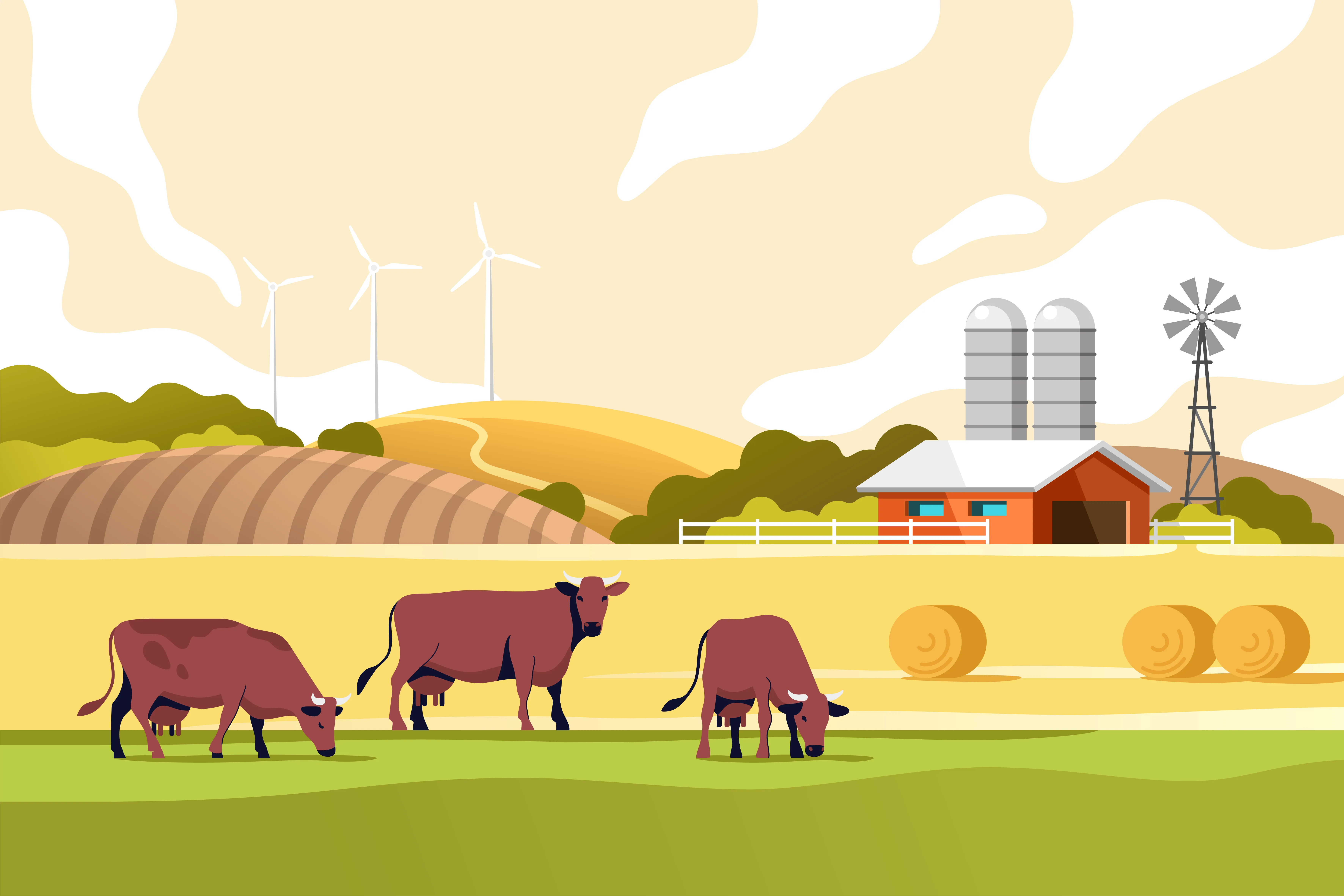
For most of human history, food systems were hyper-local. We hunted and gathered edible animals and plants within reach of our hands. 12,000 years ago, humans began the process of cultivation, domestication, breeding, and selection called agriculture. Wild grasses became wheat, maize, and rice, the staples of modern global cuisine. Wild boar, aurochs, and guinea fowl became pigs, cows, and chickens. In these societies, 90% of the population was dedicated to agriculture.
In 1900, 41% of Americans farmed. Today, only 2% of Americans farm. In 1900, farms diversified their produce, mixed crops and animals, and pasture-raised livestock. Today, most farmland is a homogenous sea of monoculture cropland. Crops and animals rarely co-exist. 97% of beef is grain-finished in a feedlot. A handful of large corporations control the food supply chain. Fruits, vegetables, and meats now travel thousands of miles on average to reach the consumer.
The industrialization of agriculture dramatically lowered labor needs and production costs. Land productivity and food security improved. However, the minimized production cost of industrial agriculture does not account for the destructive social, ecological, and cultural consequences of industrial production methods. The result is a food system in which consumers generally don’t know where their food comes from, how it is produced, and what the social and ecological costs are. If they did, they would be repulsed.
Despite unparalleled agricultural production and land productivity, rural communities are poorer than ever, and farmers commit suicide at 3.5x the national rate due to the stress of razor-thin margins and fluctuating prices. Farmers only earn 14.5 cents of every food dollar and routinely face financial ruin. This is the reward for feeding the world.
Agricultural production is the 2nd largest source of greenhouse gas emissions, comprising 13% of global emissions (20-30% if you include emissions from land deforested for agricultural use and supply chain emissions). Heavy tillage and use of agrichemicals are destroying topsoil, the foundation of 95% of food production, at terrifying rates. Agriculture accounts for 75% of the world’s freshwater usage each year. Agriculture drives nearly all global deforestation, in which millions of hectares of rich forest ecosystems are clear-cut for pastureland and seed oil crops. Yet somehow, we need to produce 60% more food by 2050 to meet the demands of a growing population.
So, the food system is tightly controlled by a handful of powerful corporations with unaccounted social, ecological, and cultural consequences. The current system erodes the very foundation of agriculture and food security. The system handicaps farmers and deceives consumers. Farmers and consumers have been quietly disenfranchised by a shrouded veil of complex, elongated supply chains.
Local food systems pierce the veil.
Local food systems revitalize communities by keeping money in producing communities. Local food systems enable buyers to directly finance responsible growing practices. Local food systems re-connect consumers with the source of their food.
All that said, can local food provide accessible, low-cost food in the same way industrial agriculture has? How do we maintain the cost benefits of industrialized agriculture while regenerating local food systems?
Cole Jones didn’t understand why so many classmates cared about their grades and getting a job. The only modern fate worse than a job was graduating without building something of his own.
More than Mark Zuckerberg or Elon Musk, Cole idolized his grandfather Herb Title. Herb built a local chain of 26 drugstores called Herbie’s in Ontario, Canada. He opened his first store in Toronto in 1958 and brick by brick, over four decades, carved out his place in Canadian retail history. Herb succeeded through customer service, hard work, and integrity. He built a life by contributing to his community. In 2000, Herbies was acquired by The Katz Group, which gave Herb more time to mentor Cole until his passing in 2019.
So, in his 3rd year of university, while classmates skittered around campus to management consulting interviews, Cole was loitering at farmers’ markets and cold-calling farmers in Waterloo, Ontario, Canada.
Cole learned that, despite the rapid proliferation of farmers' markets, farmers were going out of business at an alarming rate. It turns out farmers' markets are generally unprofitable for farmers. However, local farmers were stuck between a rock and a hard place. Sell your product to large processors or distributors with little margin (if you can meet volume minimums) or haul your product to a farmers’ market for a higher sale price but bear all the costs of transportation and logistics. Neither option left any room to operate a successful small farm.
How could you make local sales profitable for farmers? Farmers needed larger order volumes, consistent orders, and simplified logistics. In other words, they needed chefs.
In his 4th year of university, Cole set up a Shopify storefront, uploaded the price lists of a handful of farmers around Waterloo, and blasted it out to chefs around town. Cole then printed out the order lists and personally picked up orders in his 2006 Acura MDX. Black with tinted windows. Impeccably designed to carry 1,050 lbs. of Russet potatoes (at 1,100 lbs., the wheel well would rub on tight turns), Local Line began with same-day delivery of produce to chefs direct from the farm.
Cole out on a Local Line 1.0 delivery.
Farmers were happy. Local culinary leaders signed on.
However, logistics fulfilled by Cole in his Acura was constrained to farmers and chefs within a radius of Waterloo. Chefs one town over in Guelph wanted to buy from his farmer base, but the length of the delivery routes quickly became infeasible.
Then, the Ontario government sponsored Local Line for a startup immersion in Silicon Valley. Of course, rather than soak in the culture of Google or visit the Golden Gate Bridge, Cole was cold-calling local restaurants and farmers. In particular, Mission Heirloom in Berkeley.
Bobby and Yermis founded Mission Heirloom as a strictly local, regenerative, organic restaurant before these were buzzwords. They spent the whole day with Cole, walking him through their warehouse, food ordering workflow, and procurement spreadsheets. The next day, they signed up for Local Line, but Local Line couldn’t serve them. They had no infrastructure in the area or ability to build capacity quickly.
The business model worked in Waterloo, but it was highly operationally intense. Many local food marketplaces have come and gone. Generally, they have tried to re-invent the distributor model for local food systems, investing heavily in physical infrastructure (trucks, vans, warehouses, etc). They inevitably stall from the operational complexity and capital needs.
If Local Line were to succeed, they needed to build digital infrastructure to scale from Waterloo to Guelph to the Bay Area and beyond.
The modern food system is designed by industrial philosophy: produce maximum volume at minimum production cost. To reach industrial economies of scale, food heavily aggregates as it moves through the supply chain before disaggregating into consumers’ mouths.
The big 4 meat processors control 80% of the beef industry. That number is 70% in pork and 50% in poultry. The top 4 grain traders control 80% of the grain market.
The top 3 foodservice distributors – Sysco, US Foods, and Performance Food – control 32% of food distribution. Their operations are set up to run high volumes from relatively few suppliers to many buyers. They take roughly a 17-23% mark-up and earn 2-5% profit margins.
Half of all food items you see in the supermarket are produced by just 10 multinational food and beverage companies.
To fit the supply chain, buyers, distributors, processors, and packers project commodification on agricultural production. Massive factory farms, often located near processing facilities and distribution hubs, emerge to meet production minimums. These farms turn the natural agricultural process into a synthetic mechanical process. They slash any forest or competing vegetation and rip apart the soil with giant tilling machines. They sterilize the topsoil with toxic chemicals and plant genetically modified seeds engineered to withstand these toxins. The chemicals can be so strong that farmers must wear hazmat suits and won’t enter the fields for five days after spraying. They apply fertilizer derived from fossil fuels to re-inject nutrients in soils depleted by years of this cycle.
Despite the proliferation of industrialized agriculture, small and medium farms underpin global food production. In the US, small and medium-sized farms (<$1 million annual revenue) comprise 95% of the nation’s 2 million farms and $210 billion of agricultural production (36% of total). Globally, 51% of all crop production comes from farms on less than 10 hectares.
Local food does not have a supply problem. In aggregate, small and medium farmers have more than enough scale – they produce more than 1/3 of US food supply. Local food does, however, have a supply chain problem. Logistics and procurement are optimized for economies of scale that only industrialized factory farms can meet. Small and medium farmers either have to sell into a wholesale aggregator at low margin or offload at the farmers’ market.
Local food does not have a demand problem either. Growth in local food sales far outpaces the agricultural sector, rising from $404 million in 1992 to $11.8 billion in 2017. Buyer sentiment indicates that actual demand far exceeds sales. In Harvesting Opportunity, a book jointly produced by the Federal Reserve of St. Louis and the USDA, the authors note that “Consumer interest in local food has become so pervasive, in fact, that it has emerged as a major driver of retail and restaurant offerings across the board… the extent of this influence is not restricted to higher-end establishments, but ripples throughout the food service spectrum… When we speak of local food demand, we need to acknowledge that we are addressing a marketing and supply chain phenomenon that currently touches the vast majority of US consumers.”
87% of consumers say that the availability of local food is either “very” or “somewhat” important to their choice of supermarket, and 2/3 of customers are more likely to visit a restaurant that offers locally sourced ingredients. 92% of fine-dining restaurateurs, 73% of casual-dining, 63% of fast-casual operators, 50% of family-dining operators, and 35% of quick-service operators planned to add locally sourced options to their menus in the next year.
The US government has also entered the market. From 2009-2016, the USDA invested more than $800 million across 29,000 local food projects. The USDA, under Secretary of Agriculture Tom Vilsack, made regionalizing food production a cornerstone of the Food System Transformation framework. The agency committed $400 million to create regional food business centers and $650 million to support regionalized meat processing.
The real issue that’s stunting local food growth is information. Agriculture is one of the least digitized industries in the world, and the lack of accurate local food data means supply and demand cannot efficiently transact.
The market is composed of fragmented, disconnected suppliers and buyers. Nobody knows what is being grown, how, or where. By solving the information problem, Local Line can build a digital marketplace that organizes local food systems into economies of scale and leverages existing physical infrastructure. High-volume buyers could confidently procure local products, producers could offer preferential pricing with offtake contracts, and more regional infrastructure would be built to support the growing market.
To solve the information problem, Local Line needed to acquire all that information in a unified platform. In other words, they needed to become the system of record for local food production and sales.
Many “Uber for X” digital marketplaces have come and gone, many because they didn’t solve problems for the supply side. For Local Line, the supply side is farmers, ranchers, and other producers.
Farmers do not have an easy life.
The average farmer has no market power. They take prices on their inputs – equipment, seeds, fertilizer, soil amendments – from multinational corporations. Then, they take prices on their outputs, in strong part dictated by commodity traders. Lenders provide 1-year renewable loans with little wiggle room. Extreme weather events, occurring with ever-increasing frequency, can wipe out a season’s crop at any time.
A farmer often rises before the sun to feed animals, clean sheds, and prepare equipment. Then, spends the day on the land, reviewing crop health, preparing for planting, harvesting, bailing hay, whatever the season calls for. Only after sundown can the farmer begin to think about sales. Throughout the day, phone calls, text messages, and emails come in from buyers, all with different order requirements and delivery schedules. As the orders fly in, the producer reconciles inventory on pen & paper, or spreadsheet if they’re more sophisticated, to make sure they don’t sell a case of eggplant that another buyer already paid for.
In 2017, Local Line raised $230,000 CAD in seed funding to solve this order-taking, fulfillment, and inventory management challenge. With Local Line, the farmer:
The farmer still had to figure out how to deliver the goods to buyers. Luckily, Cole spent the last year slinging potatoes out of the back of his Acura. Consistent delivery schedules were essential. Every Tuesday, he goes to Guelph. Every Thursday, he goes to Kitchener. So, Local Line incorporated delivery schedules into the software. Farmers input their existing delivery routes, and the orders are automatically allocated based on the buyer’s location. And if farmers needed shipping help, they could find other nearby farmers to combine delivery capacity.
To scale, Local Line also had to manage the operational diversity of local food systems. Row crop farmers, tree crop farmers, cattle ranchers, goat herders, dairies, bakers, brewers, and more. Local Line needed to work for all types of producers to support the entire food system. The storefront functionality – the order placement and inventory reconciliation – is more or less the same, but everything else varies. The order cadence, hours of operation, pick and pack list format, packaging, invoicing, payments, and delivery schedules all vary.
So what do you do if you are Cole and team? You stand in the production line and experience the full order process.
Rootham’s Gourmet produces jarred pickles, jams, and sauces. They used Local Line to manage their orders across grocery stores, foodservice, and direct-to-consumer when a huge order came in from a grocery customer. Still owned and operated by the Rootham family, they were understaffed to meet a surge in demand. So, Cole and his team drove out to the facility in Guelph, pulled on the hair nets, and took shifts cutting the cucumbers and packing the jars.
The Local Line team learning to stuff pickle jars.
Or, take Joe at River Bell Market Garden. A former electrician, Joe won Farmer of the Year from the local Chamber of Commerce in part for his integration of Local Line to his workflow. Cole went out to his farm in Chatham, Ontario, to experience this workflow, which looked like some sort of hybrid dry cleaning/farming operation. Joe hung all his invoices in his warehouse by clothespin, tallied them up, and harvested them in his wheelbarrow, then distributed the produce into the customer boxes.
Not only did Local Line delight customers, but now this workflow was built into the platform. Day by day Local Line’s core platform absorbed the sales, inventory, and order fulfillment of all types of producers in a local food system.
Many ag-tech businesses have also come and gone over the years. Conventional tech wisdom dictates that it’s nearly impossible to build a successful business selling technology to farmers. But many ag-tech products were built without the developers ever actually stepping into the farmers boots. The reality is that farmers are businesspeople. If you solve a problem and make them more money, they will buy from you.
Local Line put on the work boots and the hair nets and built a product that quickly generated profits for the producer in both money earned and time saved.
To get the product into the hands of farmers, Local Line picked up the phone and cold-called hundreds of farmers. Cole gave them no-BS reasons why they will grow their business and make more money with Local Line. Early on, Local Line made content a core piece of their growth strategy. Success stories, case studies, testimonials, and podcast interviews. In 2021 they co-published Ready Farmer One: The Farmers Guide to Selling and Marketing, which quickly sold thousands of copies.
One of the most important growth dynamics in agriculture is that farmers talk to each other. It’s the closest thing ag-tech has to a “growth hack”.
In March 2017, the first farmer outside of Ontario, Herman from Wild Flight Farm in British Columbia, joined Local Line. He started using the platform, loved it, and then brought 4 of his farmer buddies onto the platform too. He’s still a customer today.
This is the playbook. Cold call farmers in new markets. Deliver the value proposition. Show them the evidence. Grow through referrals.
Eventually, Local Line reaches sufficient brand awareness, and the lead mix shifts from outbound to inbound. Today, 95% of Local Line’s leads come inbound.
Even if digitally aggregated in Local Line’s platform, local food inventory still needs to physically aggregate to plug into major food supply chains.
This is where food hubs come in. Food hubs operate regional physical infrastructure (packing, warehousing, logistics centers, etc.) designed for the high variability in decentralized production.
Food hubs have suppliers spread across their region with different products, order sizes, and delivery cadences. In 2019, Local Line expanded their farmer platform to enable food hubs to place orders from suppliers’ real-time inventory and see all their pickup routes in one place.
This expansion into food hubs unlocked the ability for big buyers to procure from the Local Line network. Grocery stores, restaurant chains, and other large buyers attract customers with fresh, local ingredients but are constrained by inflexible supply chains characteristic of centralized food production. No grocery store or restaurant has the capability to manage orders from 5, 10, or more producers to meet their demands for a single SKU, and then replicate that process across all their SKUs and regions. Most large buyers can’t make local food a pillar of their procurement strategy even if consumers demand it.
They can with Local Line.
By plugging into Local Line, large buyers procure local food at scale through a unified platform. They can find local suppliers, access accurate inventory data, screen for food safety certifications, and place aggregated orders from multiple suppliers. Orders are fulfilled by existing logistics infrastructure, whether farmer deliveries, food hubs, or distribution centers. Moving local food procurement to Local Line saves enterprise procurement teams 40-200+ hours per month, depending on team size, while growing local food spend 12% per year.
In 2022, Chipotle became a customer of Local Line and invested in the company out of their venture capital fund. Chipotle runs one of the largest local food sourcing programs in the country, has ambitions to grow it, but it was far too operationally complex. Local Line is now their dedicated partner in managing and growing their local food program.
In addition to a nationwide restaurant like Chipotle, Local Line serves regional/national grocery chains, several school districts, and regional hospitals.
7 years later, the marketplace has come full circle. What started as a Waterloo marketplace for local producers and chefs fulfilled by a college kid in a 2006 Acura MDX now covers the US, Canada, UK, Australia, and New Zealand. Local Line counts 13,000+ farms & food hubs in their network, and some of the largest food buyers in the world use its platform to buy local.
Local Line envisions a food system that puts local food first and treats farmers fairly. In this vision, Local Line plays the critical role of digital aggregator, the entity that enables small and medium farms to compete with industrialized agriculture.
To do so, they first must solve the information problem in local food systems. Local Line has to become the system of record for local production and procurement, including product lists, inventories, delivery routes, and orders. To become the system of record for local production and procurement, Local Line had to solve discrete pain points for each segment of the supply chain. Only then does the local foods marketplace materialize, and the flywheel starts spinning. In doing so, they re-engineered the food supply chain to flex with the variability inherent to a natural industry like agriculture.
We can’t transform the food system with software alone. The issues of industrialized production run deep into our land and communities. However, Local Line’s data platform creates the foundation to rehabilitate the food system.
Farmers have many more problems than just inventory management. Leveraging the software platform, Local Line aims to create a trusted network of service providers so that farmers can access marketing services, food safety certifications, buyer groups, and education to sustain and grow their businesses.
Local Line can also help make regenerative agriculture economically feasible. Today, sustainable agricultural practices are expensive, complex, and often unprofitable to implement. Productivity drops in the short term as the land adapts. Farmers need to change how they’ve operated for decades. Very little transition financing is available. Buyer demand and pricing at the end of the multi-year transition period is unknown.
With a direct connection to suppliers through Local Line, buyers can directly incentivize sustainable practices through transition financing and offtake agreements. Combined with access to technical services and markets, Local Line can dramatically reduce the uncertainty facing a farmer who wants to regenerate their land.
By aggregating local food systems with problem-solving technology, Local Line can re-engineer the supply chain to enable ecologically sustainable, regionalized food systems around the world.
The History of Food documentary.
Industrialization of Agriculture – Johns Hopkins Center for a Livable Future.
A Death in Dairyland Spurs a Fight Against Silent Killer – NY Times.
2021 Farm Share of US Food Dollar – USDA.
WRI concludes 13% of total GHGs (excludes deforestation).
Reports from Poore and Nemecek and Crippa et al via Our World In Data.
Scientific American. Generating 3cm of topsoil takes 1,000 years. At current rates, all topsoil could be gone in 60 years.
The Guardian 95% of food grown in topsoil.
Agroecology and Regenerative Agriculture – Vandana Shiva.
Feeding the World Sustainably – UN FAO.
Just A Few Companies Control the Meat Industry – Civil Eats.
Record profits for grain firms – The Guardian.
Sysco – Seeking Alpha.
Food Miles – ATTRA Sustainable Agriculture.
You’ll Never Eat McDonald’s French Fires Again After Watching This – Michael Pollan.
Farming and Farm Income – USDA.
Smallholders produce one-third of the world’s food – Our World In Data.
Local Food Sales Continue to Grow – USDA.
Harvesting Opportunity: The Power of Regional Food Systems Investments to Transform Communities.
Tom Vilsack on How the USDA Can Transform the Food System – Civil Eats.
The true extent of America's food monopolies, and who pays the price - The Guardian.
Will began his career in venture capital, investing and building great businesses. Two years ago, he dove headfirst into the world of agriculture. Today he spends his time at the intersection of economy and ecology, helping improve the food system through capitalism.
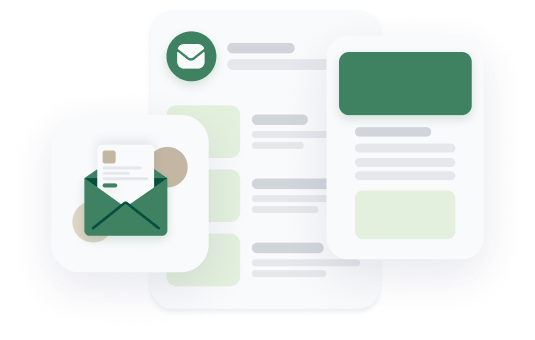
Stay in the loop by subscribing to our newsletter and receive weekly insights that you won't want to miss.
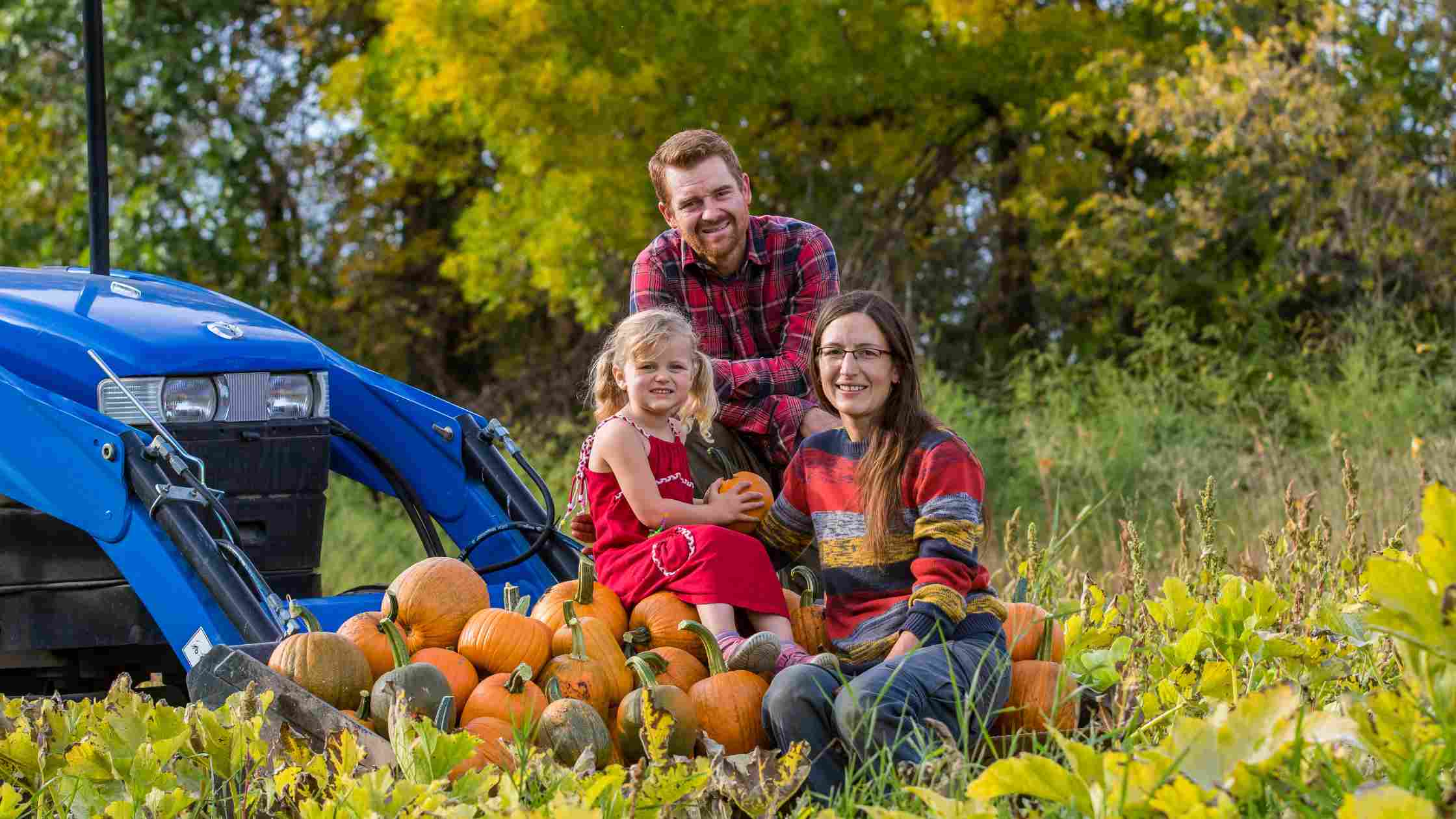
Brown Sugar Produce is a family-owned and operated produce farm located just outside of Brandon,...
 Nina Galle
Nina Galle
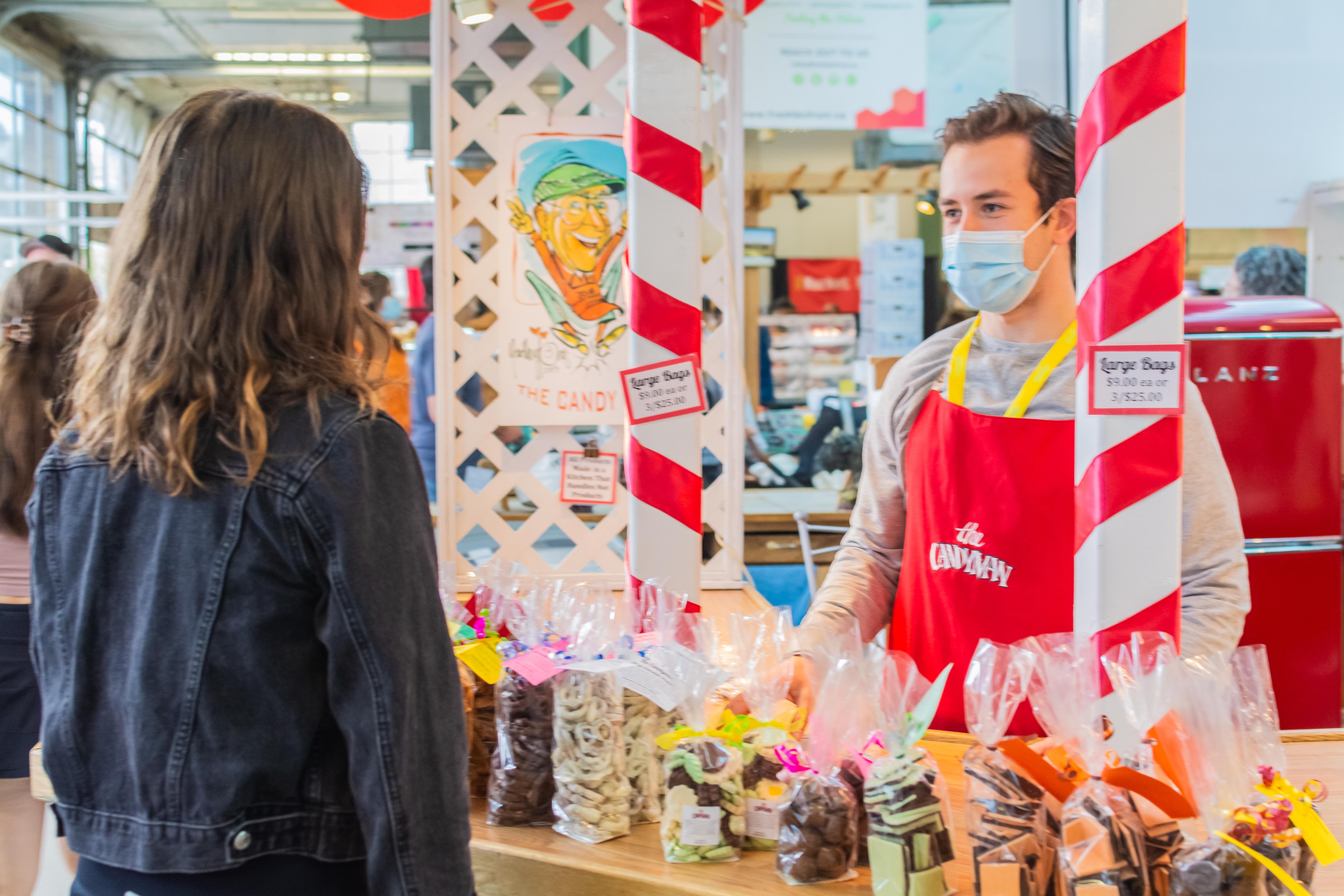
The Old Strathcona Farmers’ Market, located in Edmonton, Alberta, has been at the heart of the Arts...
 Nina Galle
Nina Galle
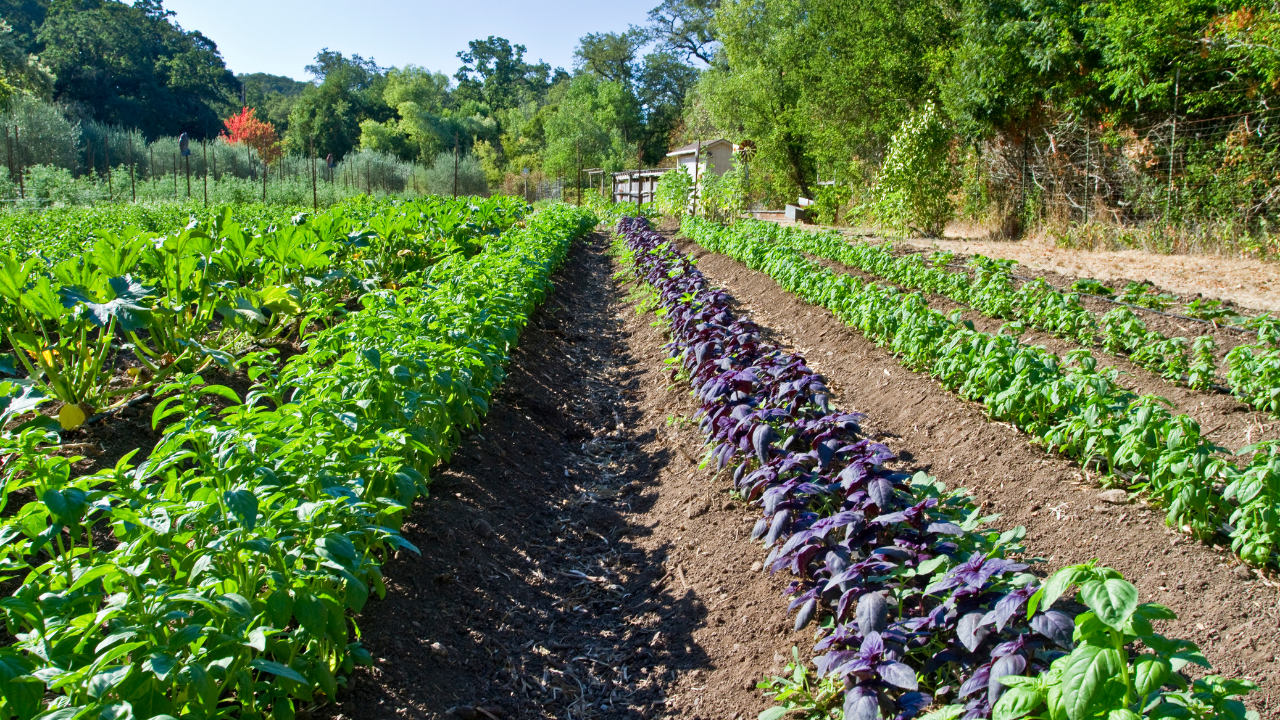
Taste of Eden Market was started out of necessity.
 Nina Galle
Nina Galle